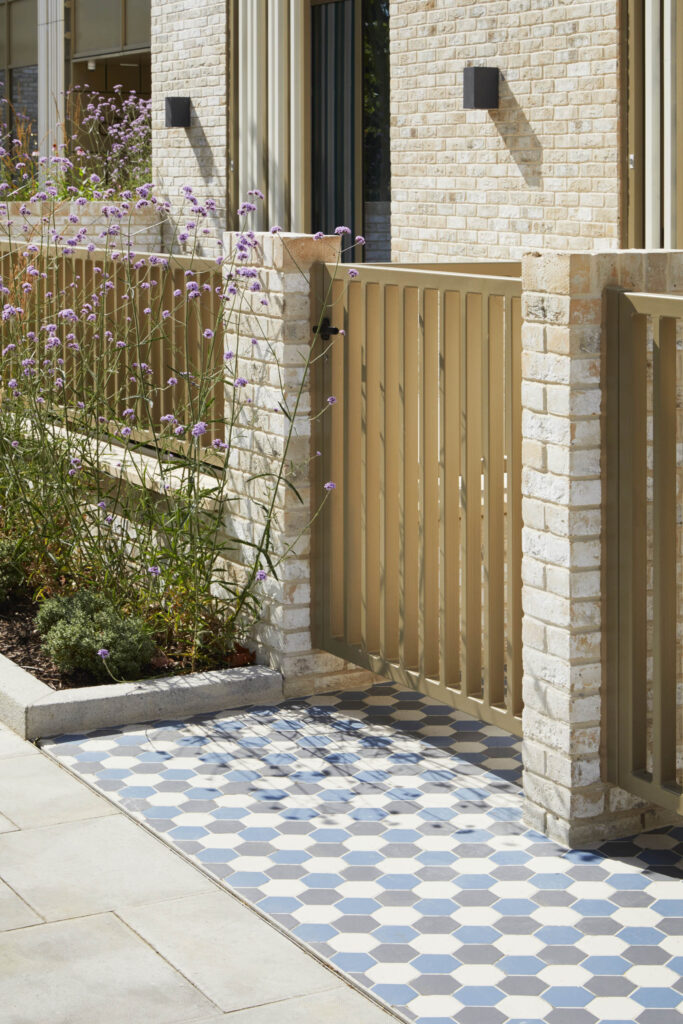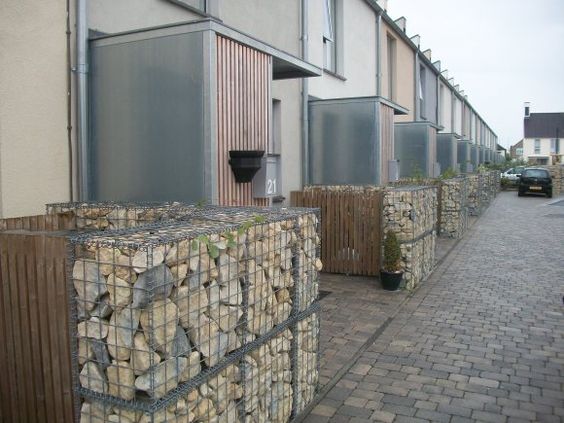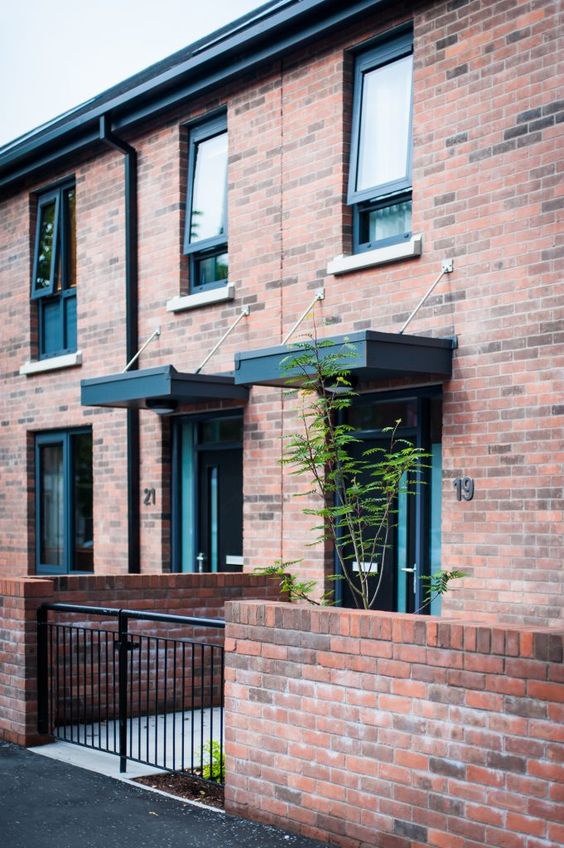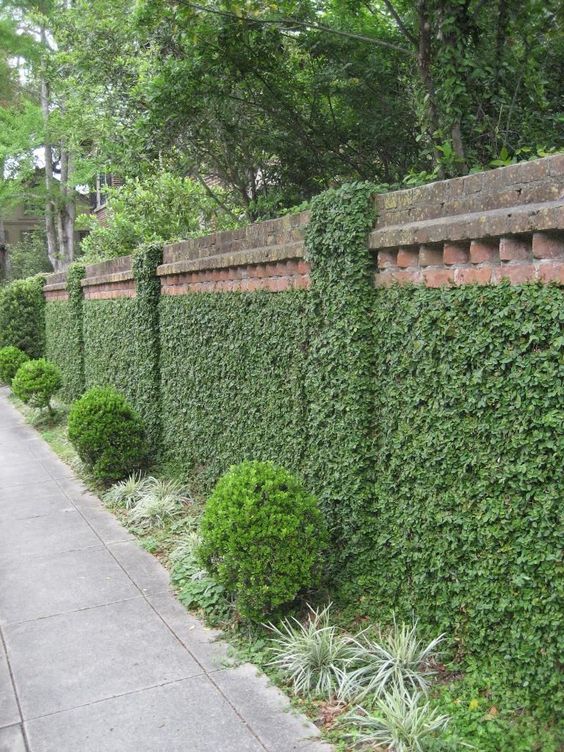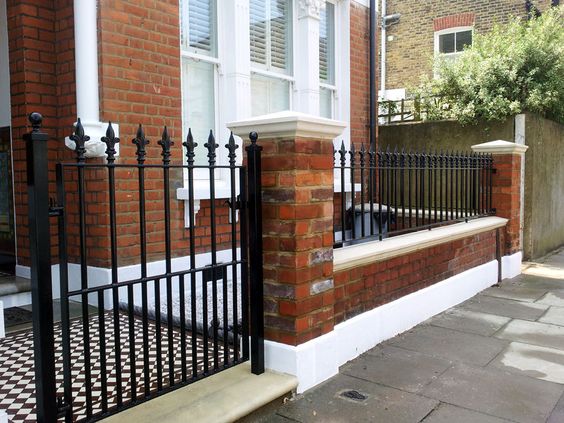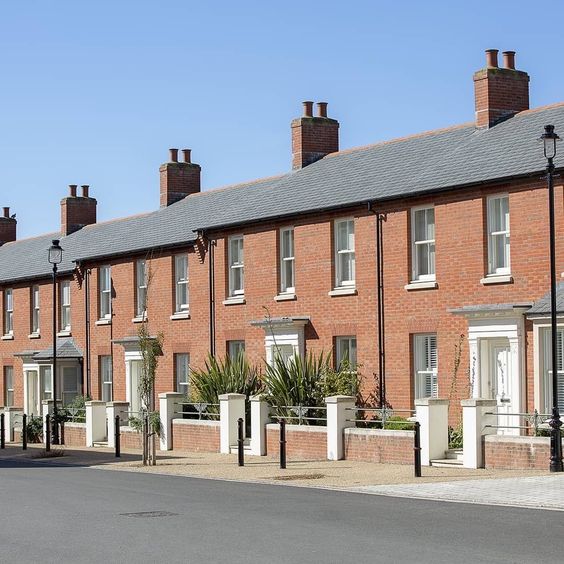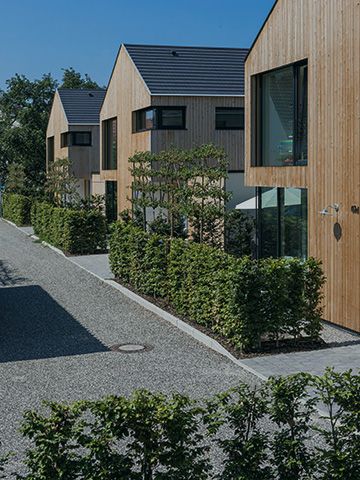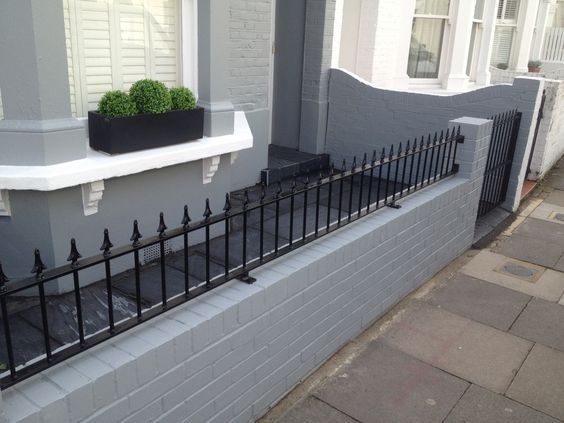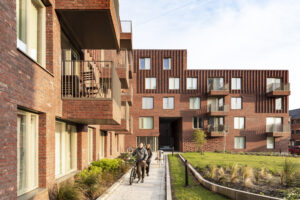
Hulme Living Leaf Street Housing
Hulme Living Leaf Street Housing by Mecanoo for One Manchester The area around Leaf Street in Hulme, just outside Manchester city centre, has a history
Apartment buildings should sit in attractively landscaped grounds, providing private garden space for ground floor units together with a communal garden at ground floor for those residents living in upper floor units. Good quality internal and external environments must be provided for occupants to promote health and well-being. Car parking provision must be carefully sited and not dominate the site.
Floorplates should sit comfortably with the urban grainThe pattern of the arrangement of street blocks, plots and their buildings in a settlement. The degree to which an area’s pattern of blocks and plot subdivisions is respectively small and frequent (fine grain), or large and infrequent (coarse grain). Urban grain is a key component of defining the character of a place. More, avoiding large ‘L’ shaped blocks, whilst the number of dwellings accessed from a single core should be no more than eight units per floor – this will help to encourage a sense of community.
Introduce appropriate spacing and breaks between buildings to achieve a sensitive urban grainThe pattern of the arrangement of street blocks, plots and their buildings in a settlement. The degree to which an area’s pattern of blocks and plot subdivisions is respectively small and frequent (fine grain), or large and infrequent (coarse grain). Urban grain is a key component of defining the character of a place. More and to avoid overly long frontages and perimeter blocks without appropriate spacing between buildings.
Applicants should demonstrate in their submission how this element of the code has been complied with.
Documents required:
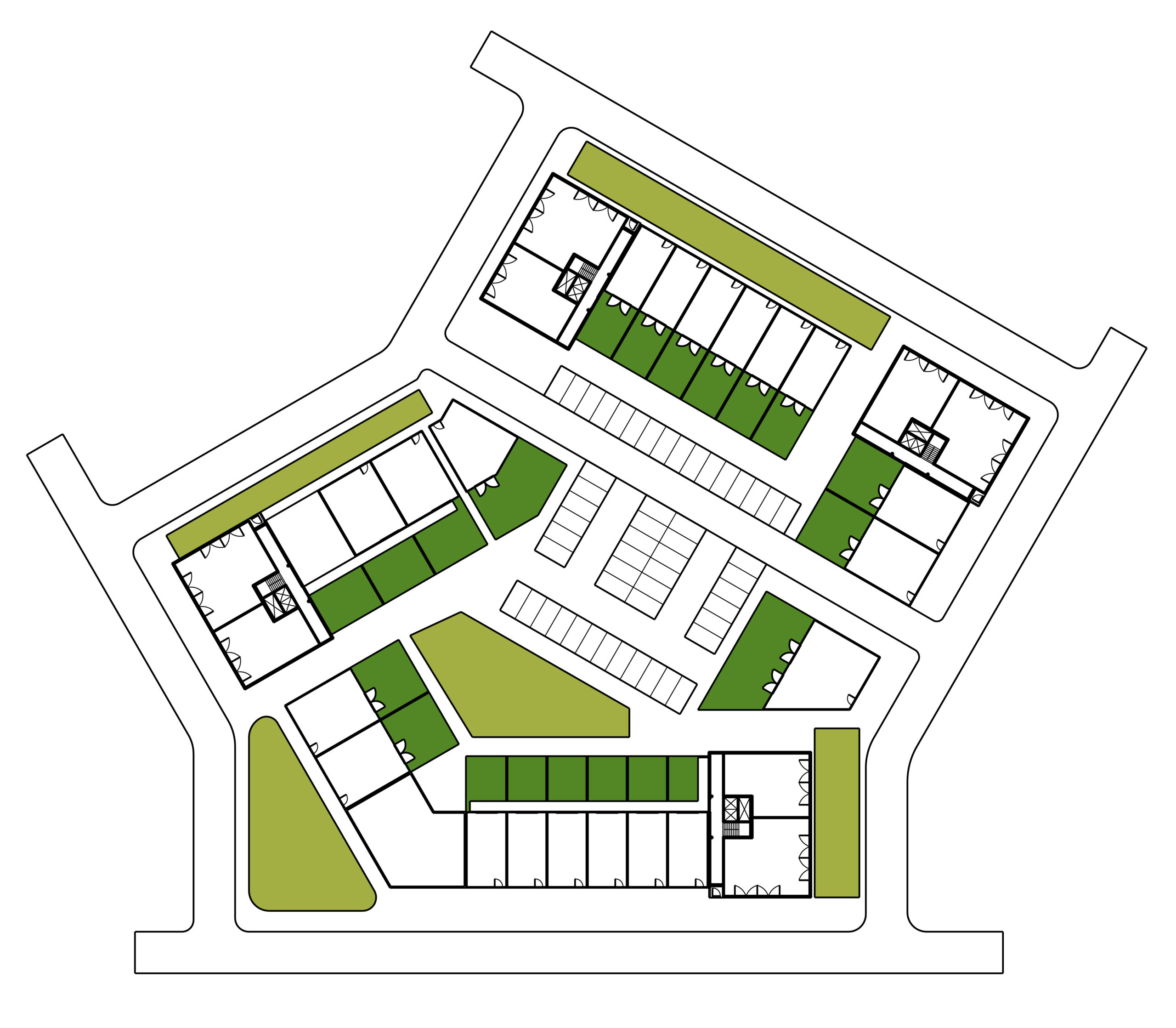
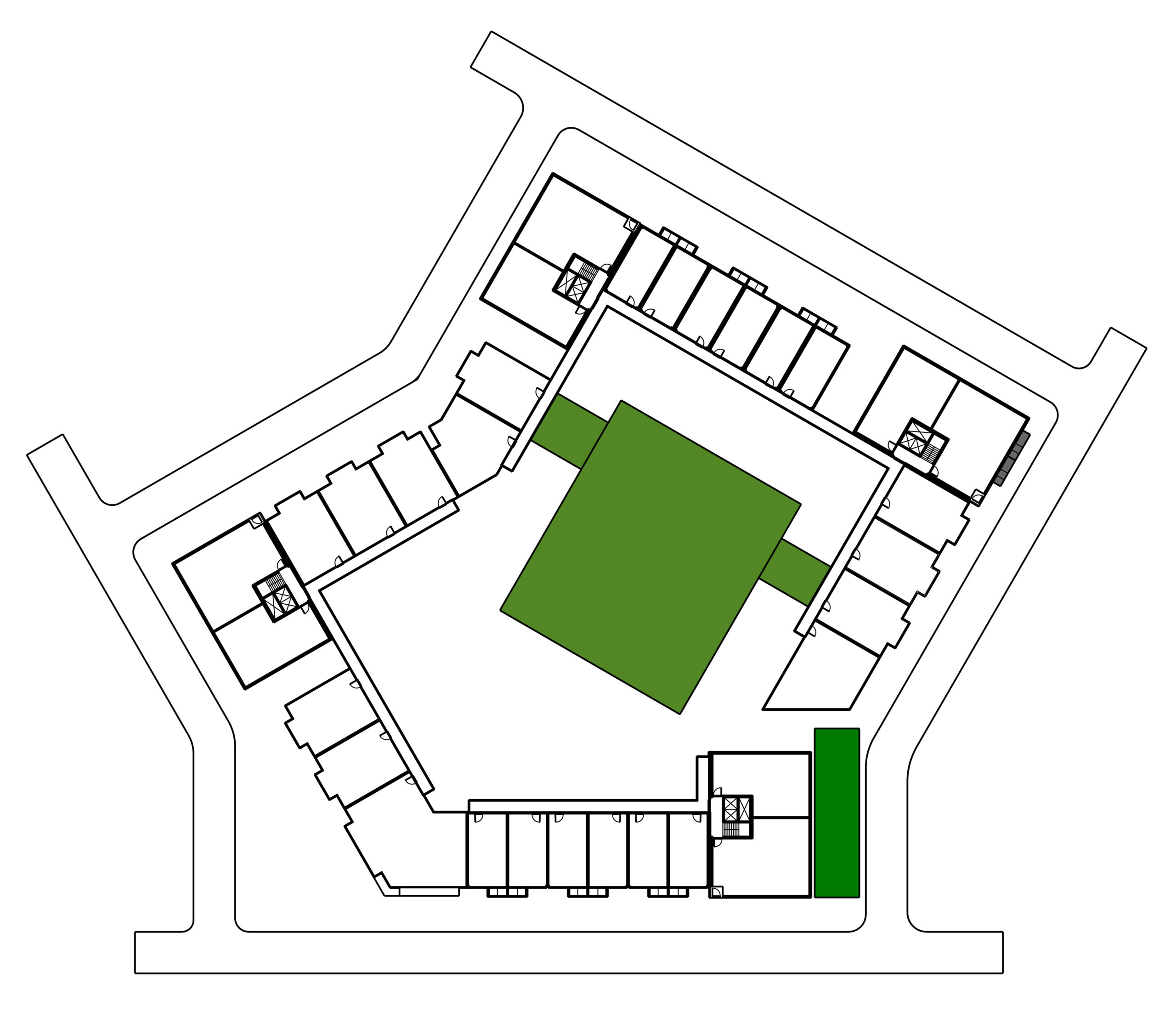
Courtyard and perimeter blocks are enclosed and therefore require careful consideration in their design. Applicants will be required to introduce breaks between buildings to ensure they are both visually and physically permeable. Regard must be had to height, orientation, daylight, sunlight, privacy and adequate separation distances in order to ensure that a high quality environment is delivered.
Breaks between buildings are important to provide relief in the built formForm is the three-dimensional shape and modelling of buildings and the spaces they define. Buildings and spaces can take many forms, depending upon their: size and shape in plan; height; bulk – their volume; massing – how bulk is shaped into a form; building lines – the alignment of building frontages along a street; and relationship to the plot boundary – and whether they share party walls or not. In the case of spaces, their form is influenced by the buildings around them. More and to aid permeabilityThe degree to which an area has a variety of pleasant, convenient and safe routes through it. More and legibilityThe degree to which a person understands and recognises characteristics about an area or building which help them to navigate around an area, or understand a building. More into and through the site. Together with breaks between the buildings, the reduction in height of buildings at the southern end of a block will allow greater daylight and sunlight penetration into courtyards, creating a more comfortable and pleasant environment to support and improve the health and wellbeing of residents and visitors.
Applicants should demonstrate in their submission how this element of the code has been complied with.
Documents required:
Perimeter courtyard block: this example shows a rectangular block with its longest elevation facing south for the maximum number of south facing units. All apartment units are at least dual aspectDual aspect houses or apartments have been designed to have [openable] windows on two or more walls, allowing for increased levels of natural daylight, sunlight and cross ventilation. More and there is adequate separation distances between elevations. There is a mix of communal and private gardens on ground floor. Public facing elevations have private residential entrances and active commercial units on the corners. There are multiple entrances into apartment buildings and no building has more than eight units per core.

Private garden space
Communal open spaceOpen spaces forming part an estate or block intended for use by residents of the respective estate or block. They are distinguished from publicly accessible open spaces or other public land open to members of the public by clearly defined boundaries. More
Limiting the number of apartments per core will help to minimise the number of single aspect units and help to create an appropriate urban grainThe pattern of the arrangement of street blocks, plots and their buildings in a settlement. The degree to which an area’s pattern of blocks and plot subdivisions is respectively small and frequent (fine grain), or large and infrequent (coarse grain). Urban grain is a key component of defining the character of a place. More. Limiting the number of units off one core helps to create a sense of social cohesion and community amongst residents.
Applicants should demonstrate in their submission how this element of the code has been complied with.
Documents required:
Single block: Apartments units per core in a single block. Where building cores are on external elevations, they should be north facing to maximise residential units facing south.
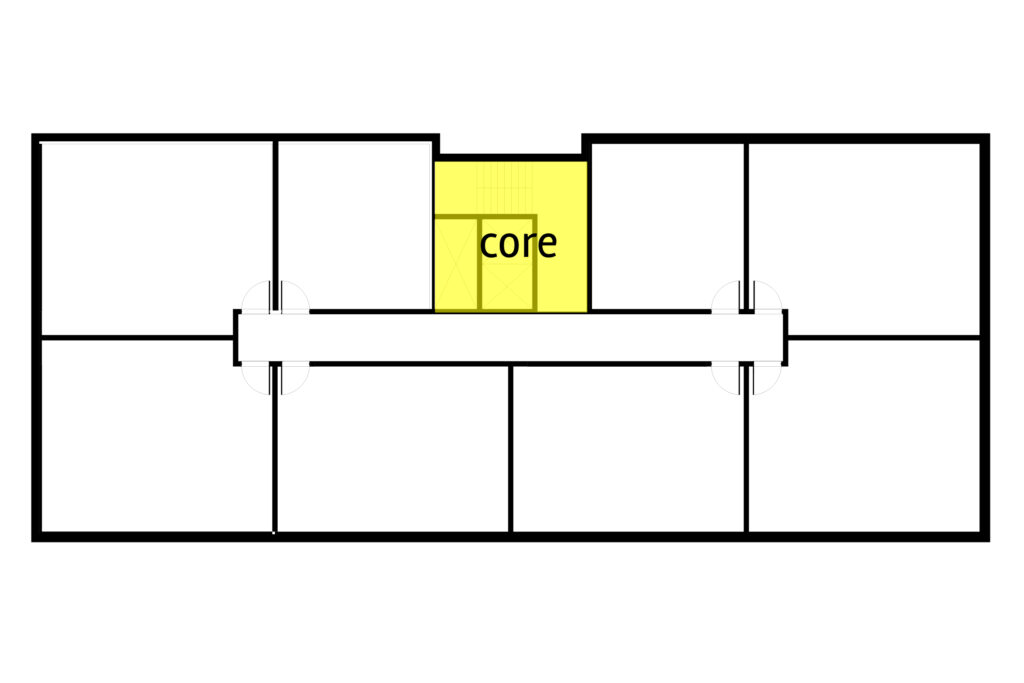
Perimeter block: Apartments arranged around the corner of a perimeter block with two cores and allows for ground floor entrances from both elevations.

The creation of dual aspectDual aspect houses or apartments have been designed to have [openable] windows on two or more walls, allowing for increased levels of natural daylight, sunlight and cross ventilation. More internal spaces is important, increasing the opportunity for natural daylight and sunlight for at least part of the day, all year round. Where it is not possible to avoid apartments with a northerly aspect, floor plans must be designed to maximise the number of apartments with a dual aspectDual aspect houses or apartments have been designed to have [openable] windows on two or more walls, allowing for increased levels of natural daylight, sunlight and cross ventilation. More. People like sunlight, it is seen as providing light and warmth, making rooms look bright and cheerful and also having a theraputic health giving effect.
Applicants should demonstrate in their submission how this element of the code has been complied with.
Documents required:
Deck Access: Apartments with deck access provide dual aspectDual aspect houses or apartments have been designed to have [openable] windows on two or more walls, allowing for increased levels of natural daylight, sunlight and cross ventilation. More elevations for daylighting and cross ventilation

Deck access and internal building coreThe core of a building is usually a square or rectangular concrete tube which houses its interior elements such as staircases, lift shafts and pipes. More: a hybrid model of internal and external circulation corridors can maximise the number of dual aspectDual aspect houses or apartments have been designed to have [openable] windows on two or more walls, allowing for increased levels of natural daylight, sunlight and cross ventilation. More units

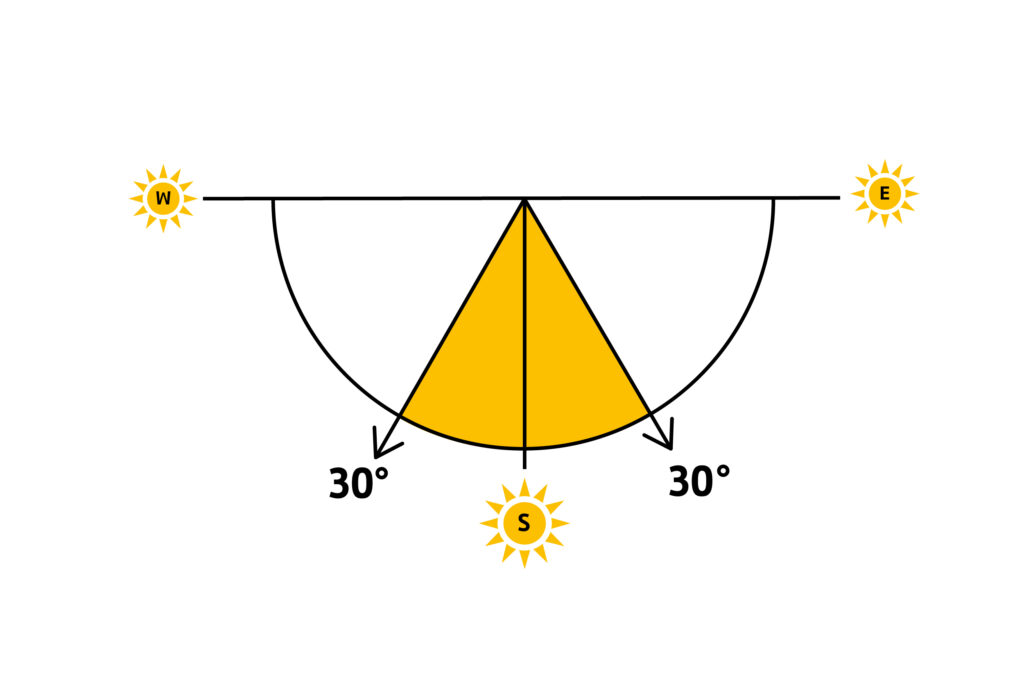
sunpath

window elevations

dual aspect unit
Internal corridor slab; apartment units in a long horizontal shape building should have the longest elevations facing south and place the building coreThe core of a building is usually a square or rectangular concrete tube which houses its interior elements such as staircases, lift shafts and pipes. More or services on the north elevation.

Internal corridor tower; apartments with a smaller floorspace can maximise dual aspectDual aspect houses or apartments have been designed to have [openable] windows on two or more walls, allowing for increased levels of natural daylight, sunlight and cross ventilation. More apartments and locate the building coreThe core of a building is usually a square or rectangular concrete tube which houses its interior elements such as staircases, lift shafts and pipes. More on the north elevation
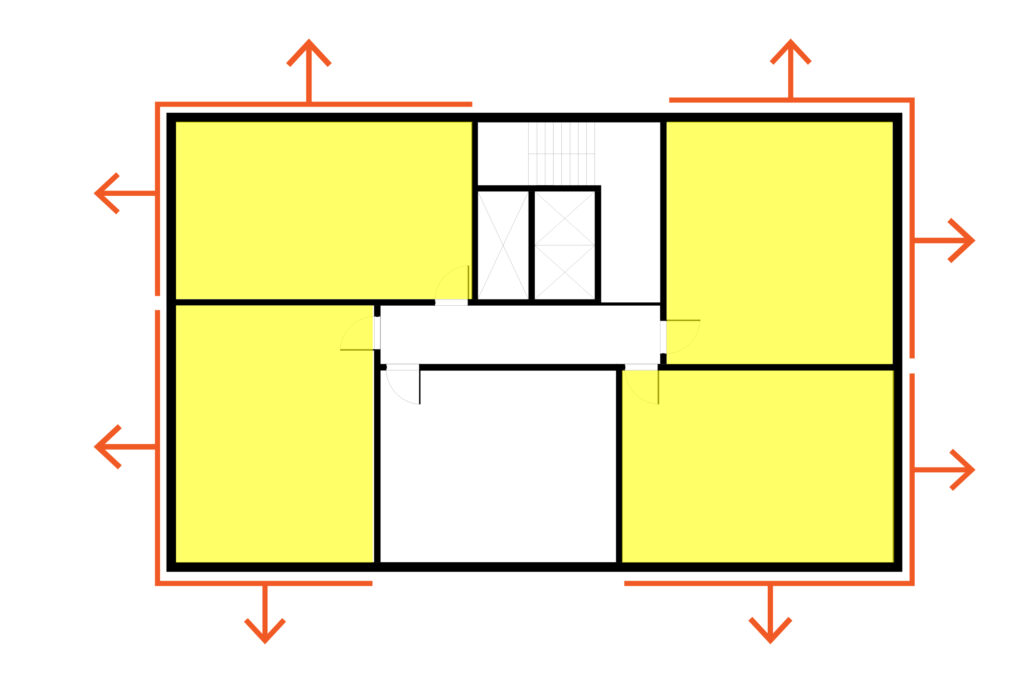
The living conditions of internal environments has an impact on the health and wellbeing of the inhabitants of a house.
Allowing maximum daylight and sunlight can keep homes bright in winter months and allow cool breezes through the house in summer. Designers must ensure that habitable roomsAny room used or intended to be used for sleeping, cooking, living or eating purposes. More (those used for main living spacesLiving spaces can comprise dining rooms, lounges, kitchens, children’s play areas, offices, libraries, recreational spaces. These rooms should be adequate size, well-lit and connected to the house. A kitchen combined with another use such as lounge / diner, will be considered a living space. More including kitchens) receive good daylight and sunlight through orientation and window positioning and size. Whilst access to daylight and sunlight is important, care must be taken that there are no issues with overheating in the summer or excessive heat loss in the winter. Cross ventilation through habitable roomsAny room used or intended to be used for sleeping, cooking, living or eating purposes. More can be achieved though openable windows on dual aspectDual aspect houses or apartments have been designed to have [openable] windows on two or more walls, allowing for increased levels of natural daylight, sunlight and cross ventilation. More units, on both elevations with a clear route for breezes through the apartment.
Avoid noise transmittance where possible by separating main living spacesLiving spaces can comprise dining rooms, lounges, kitchens, children’s play areas, offices, libraries, recreational spaces. These rooms should be adequate size, well-lit and connected to the house. A kitchen combined with another use such as lounge / diner, will be considered a living space. More such as lounges on either sides of the house, away from adjoining party walls.
Applicants should demonstrate in their submission how this element of the code has been complied with.
Documents required:
Dual aspect apartments: apartments with at least a dual aspectDual aspect houses or apartments have been designed to have [openable] windows on two or more walls, allowing for increased levels of natural daylight, sunlight and cross ventilation. More with two window elevations can have the longest internal elevation wall

Internal corridor access; apartments with an internal enclosed corridor must have a wider external elevation and larger windows to allow for more natural light to more rooms
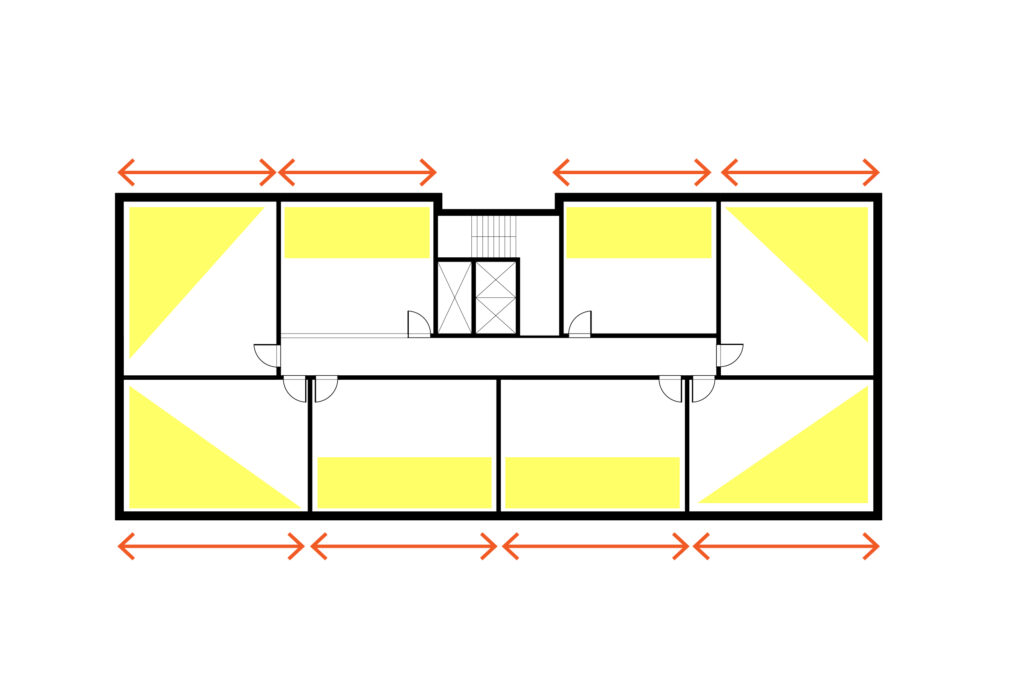

Elevations with natural light

Longest elevation
The calculator has adapted from the Technical housing standards – nationally described space standard (March 2015) by the Department for Communities and Local Government
NB: the national space standards are subject to change and therefore the following calculator should be used only as a reference and refer to government source for official standards
Applicants must minimise blank facades, plant screens and car park entrances at ground floor level, particularly where they face areas of public realm. Opportunities to introduce private entrances at ground floor level should be maximised where communal or commercial uses are not appropriate.
Applicants should demonstrate in their submission how this element of the code has been complied with.
Documents required:

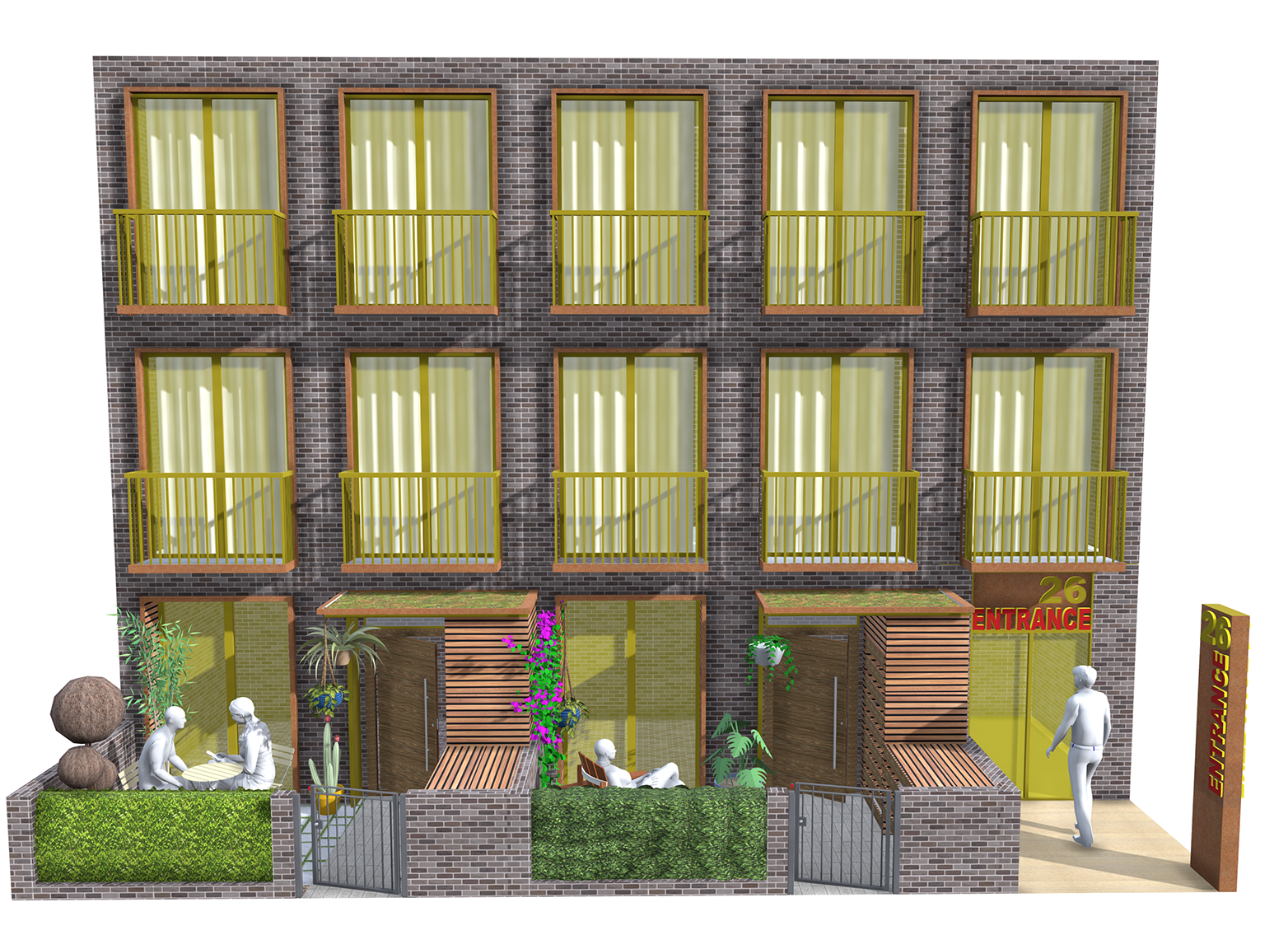
Residential windows and entrances: ground floor apartments or houses can provide activity during day and night and encourage stewardship by residents over the public realmThis is the space between and within buildings that is publicly accessible, including streets, squares, forecourts, parks and open spaces. More.

Offices and workshops: work spaces with windows and entrances from street will create long periods of activity during the day. Entrances should always be taken from the public realmThis is the space between and within buildings that is publicly accessible, including streets, squares, forecourts, parks and open spaces. More.

Retail and leisure: shops and cafes create lots of people activity, primarily during the day. They can be great places for the community to meet or have a coffee. Outdoor seating for cafes is encouraged.
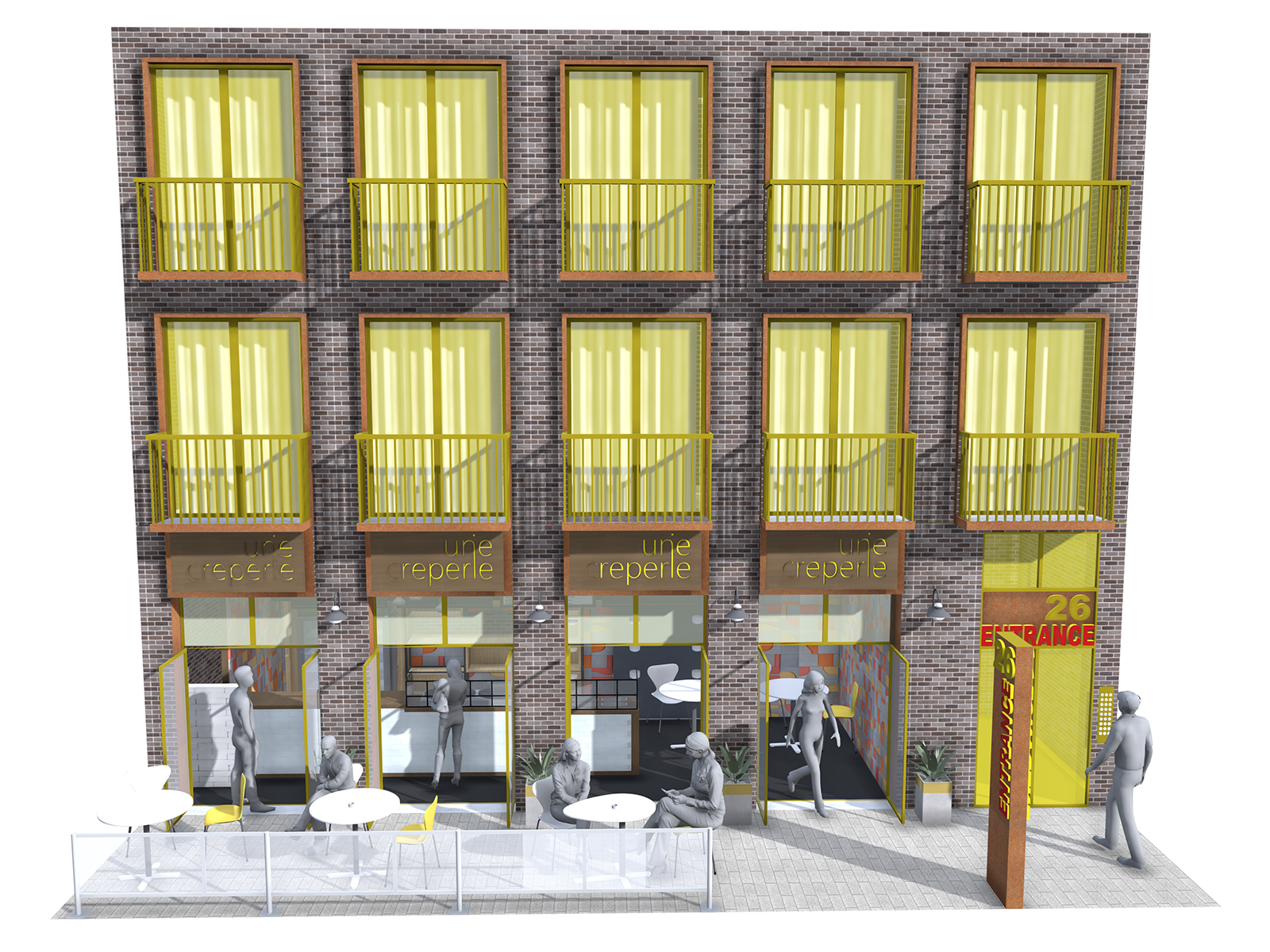
Cafes, restaurants, bars and takeaways: where such uses are allowed, they can create activity during the evening time. Outdoor seating and large windows can deliver activity to enliven streets when permissible.
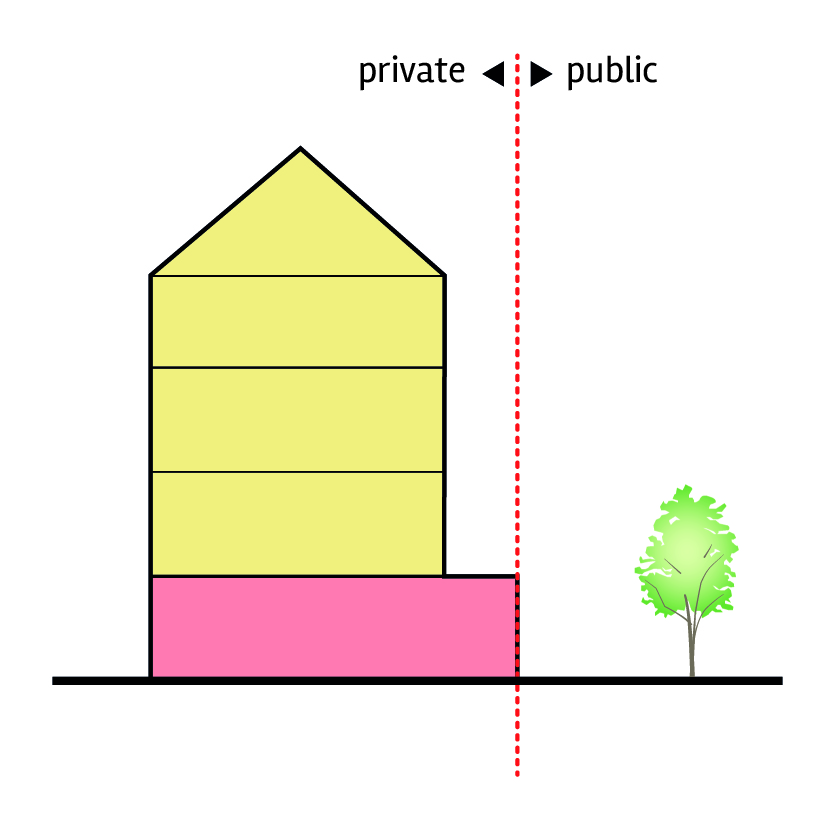
Apartments with retail (cafes, leisure, restaurants, etc) on ground floor
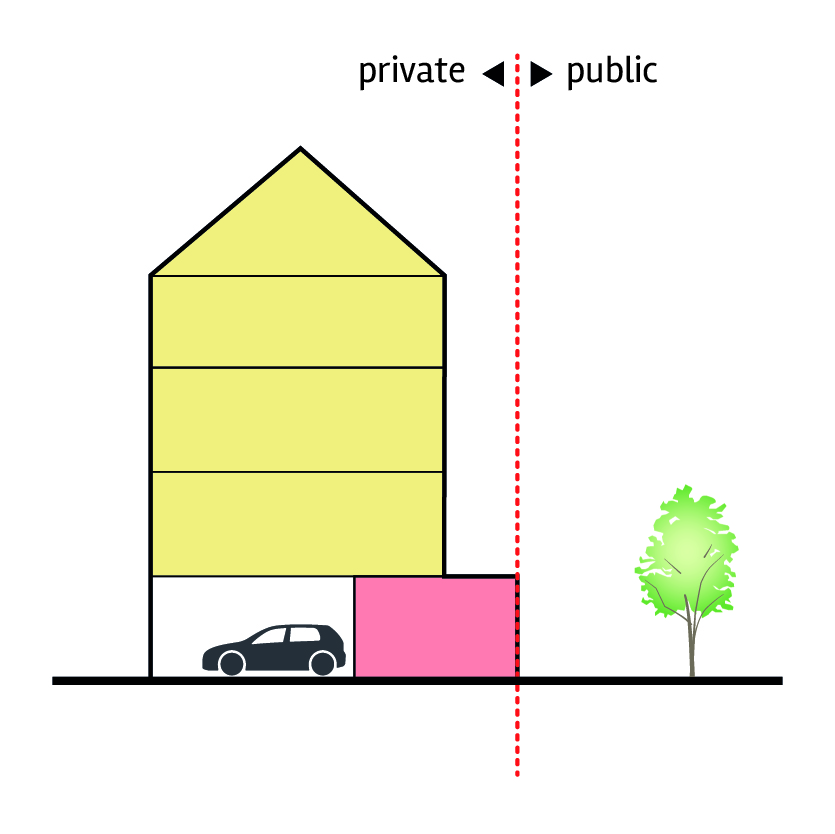
Apartments with undercroft parking and active retail kiosk on front public boundary
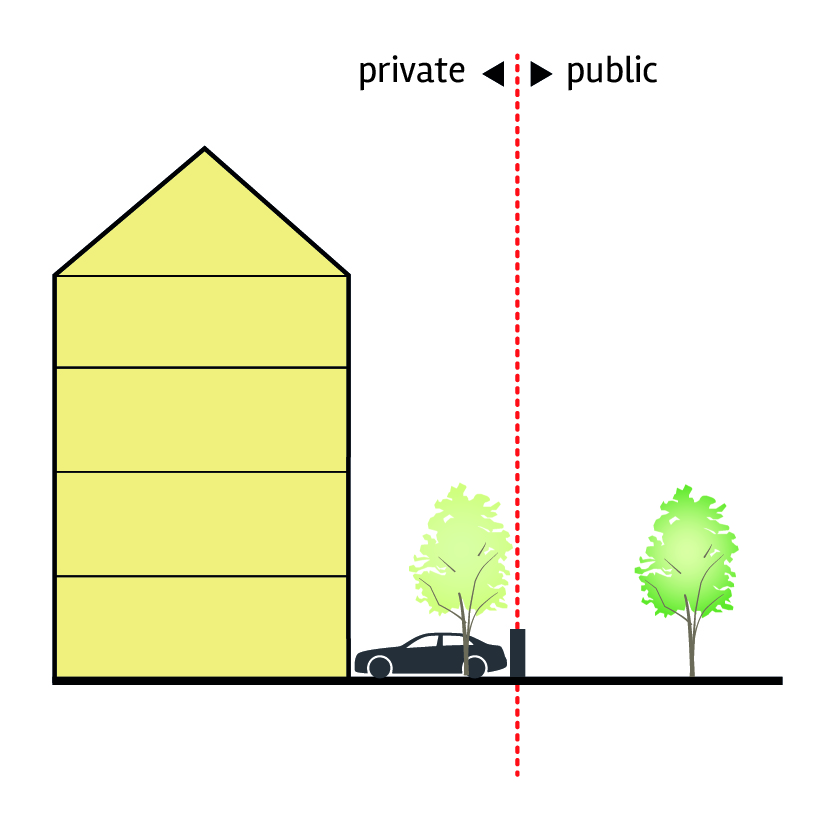
Apartments with parking to front boundary will only be allowed if sufficient space for landscape and accessible paths
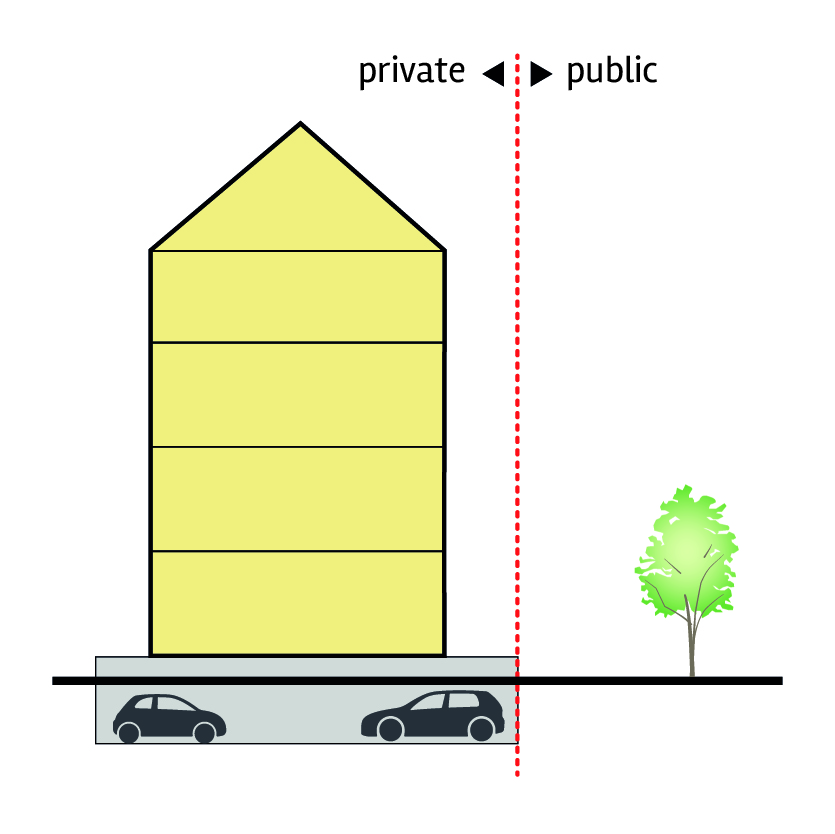
Raised basements will only be allowed if there is an accessible entrance and approach to the ground floor residential unit
Family homes of certain size benefit from multiple rooms for people of all ages to spend time playing, working or relaxing away from main living areas. Two living spacesLiving spaces can comprise dining rooms, lounges, kitchens, children’s play areas, offices, libraries, recreational spaces. These rooms should be adequate size, well-lit and connected to the house. A kitchen combined with another use such as lounge / diner, will be considered a living space. More can provide for dining rooms, lounges, kitchens, children’s play areas, offices, libraries, recreational spaces. These rooms should be adequate size and well-lite. A kitchen combined with another use such as lounge / diner, will be considered a living space.
Applicants should demonstrate in their submission how this element of the code has been complied with.
Documents required:
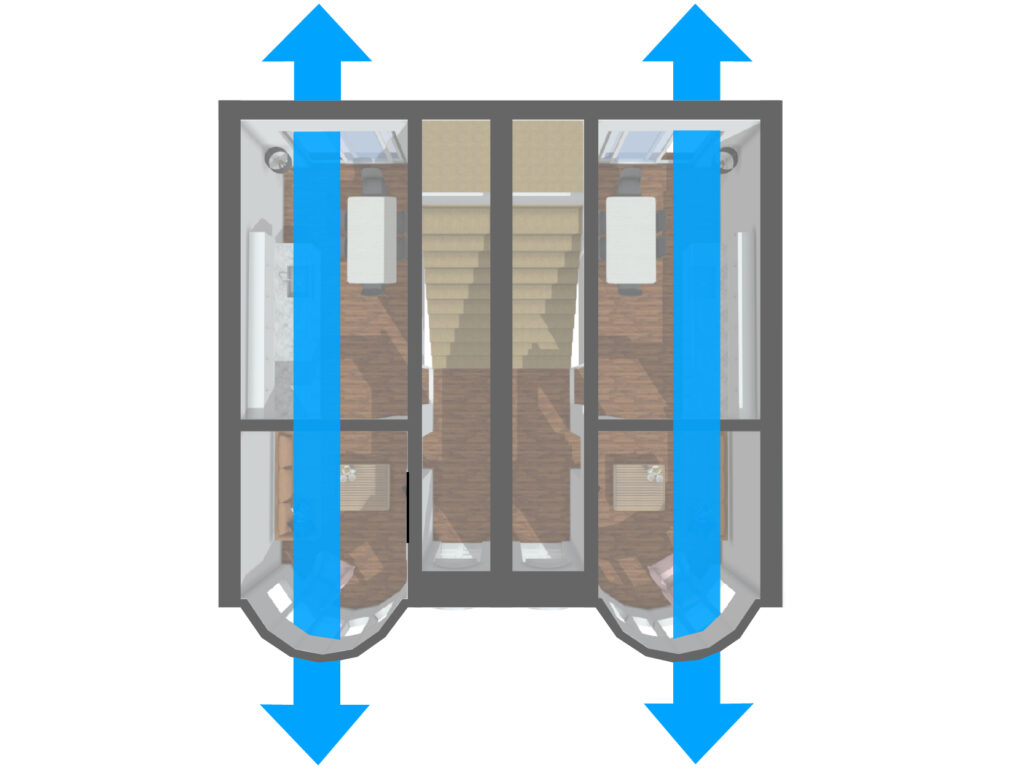
Cross ventilation: dual aspectDual aspect houses or apartments have been designed to have [openable] windows on two or more walls, allowing for increased levels of natural daylight, sunlight and cross ventilation. More windows allow natural breezes through the house
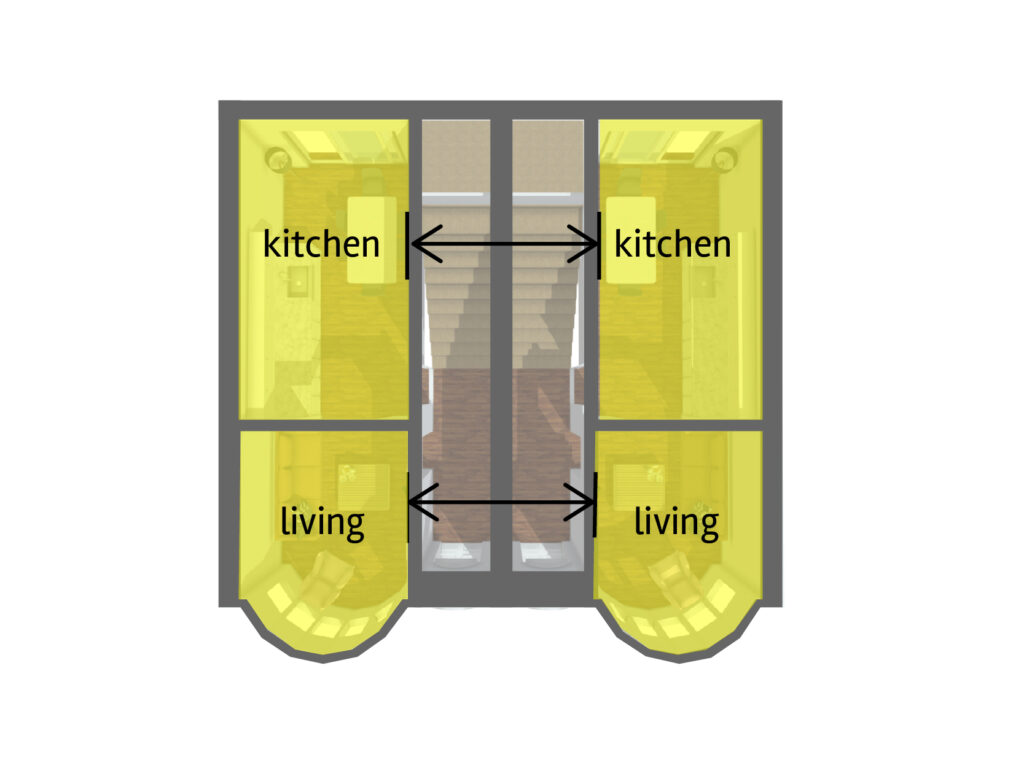
Noise mitigation: habitable roomsAny room used or intended to be used for sleeping, cooking, living or eating purposes. More are separated to avoid excessive noise transmittance
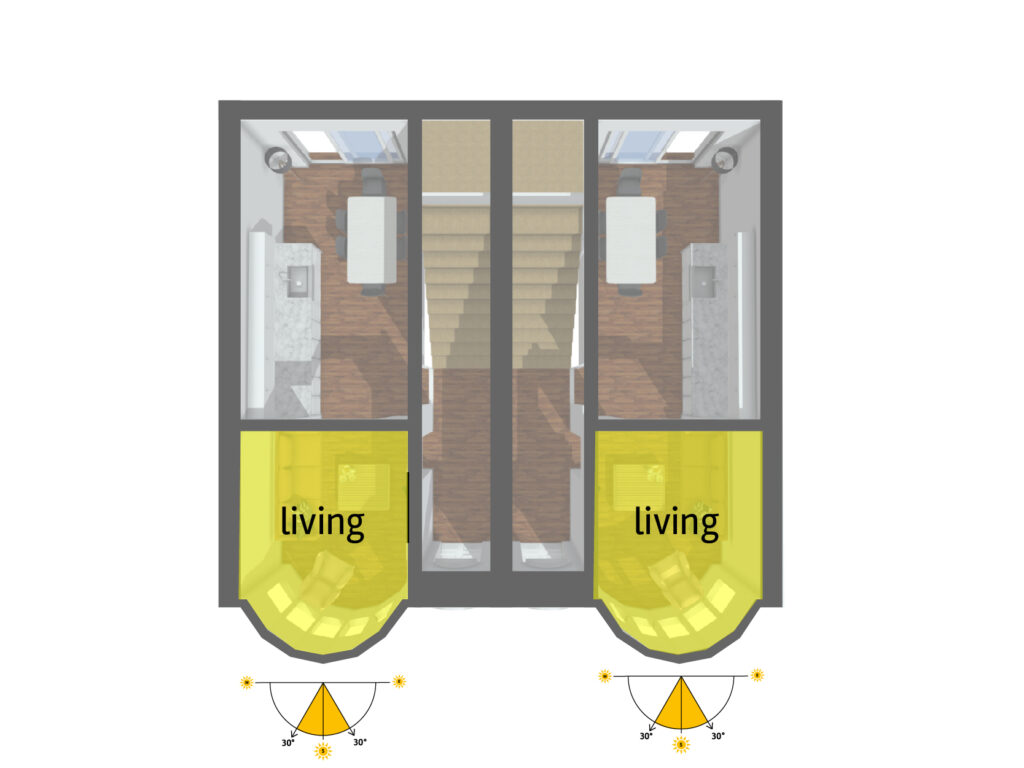
Natural Daylight: habitable rooms face south with large windows for daylight
The standard exceeds nationally prescribed requirements due to the characterCharacter includes all of the elements that go to make a place, how it looks and feels, its geography and landscape, its noises and smells, activity, people and businesses. This character should be understood as a starting point for all development. Character can be understood at three levels; the area type in which the site sits, its surroundings and the features of the site. More of many of the existing properties in Trafford having higher floor to ceiling heights, and therefore greater building heights generally.
This higher standard ensures rooms feel more spacious and ensures Trafford’s housing stock continues its reputation for good quality and above standard room sizes. New housing should provide quality accommodation in terms of light, ventilation and sense of space.
Applicants should demonstrate in their submission how this element of the code has been complied with.
Documents required
The minimum width for all paths, corridors and decks used for communal access should be 1.5m. Deck access schemes are only likely to be considered acceptable where they allow for the provision of dual aspect units, where they cannot otherwise be provided.
Applicants should demonstrate in their submission how this element of the code has been complied with.
Documents required:
Safe and secure amenityThe desirable or useful features of a building or place which support its ongoing use and enjoyment by building occupants, residents, visitors, workers etc. It is usually understood to mean visual and aural amenity. Factors relevant to amenity include the general characteristics of the locality (including the presence of any feature of historic, architectural, cultural or similar interest), daylight, sunlight, outlook, privacy, air quality, effects of wind, odour, noise and vibration. Amenity should be preserved, so potential impacts need to be assessed and managed. More spaces must be provided for use by all residents. The provision of private amenity spacePrivate outdoor space accessible by an individual dwelling unit, in the form of gardens, balconies, roof terraces. More is essential for people’s health and wellbeing. Communal amenityThe desirable or useful features of a building or place which support its ongoing use and enjoyment by building occupants, residents, visitors, workers etc. It is usually understood to mean visual and aural amenity. Factors relevant to amenity include the general characteristics of the locality (including the presence of any feature of historic, architectural, cultural or similar interest), daylight, sunlight, outlook, privacy, air quality, effects of wind, odour, noise and vibration. Amenity should be preserved, so potential impacts need to be assessed and managed. More space and gardens should receive at least 2 hours of sunlight on the ground on 21 March in accordance with the guidance set out in BRE guidance.
Applicants should demonstrate in their submission how this element of the code has been complied with, including the two hour sun on ground requirement.
Documents required:

Nature contributes to the quality of a place, and to people’s quality of life, and it is a critical component of well-designed places. Natural features are integrated into well-designed development. They include natural and designed landscapes, high quality public open spaces, amenityThe desirable or useful features of a building or place which support its ongoing use and enjoyment by building occupants, residents, visitors, workers etc. It is usually understood to mean visual and aural amenity. Factors relevant to amenity include the general characteristics of the locality (including the presence of any feature of historic, architectural, cultural or similar interest), daylight, sunlight, outlook, privacy, air quality, effects of wind, odour, noise and vibration. Amenity should be preserved, so potential impacts need to be assessed and managed. More spaces, podium decks, street trees, and other trees, grass, planting and water. Trafford’s identityThe identity or character of a place comes from the way that buildings, streets and spaces, landscape and infrastructure combine together and how people experience them. More is largely characterised by the extensive tree cover and mature planting across the Borough. These places have been created in the past through the bold visions of previous generations. To maintain this identityThe identity or character of a place comes from the way that buildings, streets and spaces, landscape and infrastructure combine together and how people experience them. More it is important that this tradition is continued.
Applicants should demonstrate in their submission how this element of the code has been complied with.
Area types:
Documents required:
The additional height and density of apartment developments should not compromise the privacy of its residents or neighbours in relation to neighbouring properties (including within the development), the street and other public space.
Applicants should demonstrate in their submission how this element of the code has been complied with.
Documents required:
Wrap around corner units; the diagram shows one of numerous ways of mitigating potential overlooking by using adequate separation and wrap around corner units.
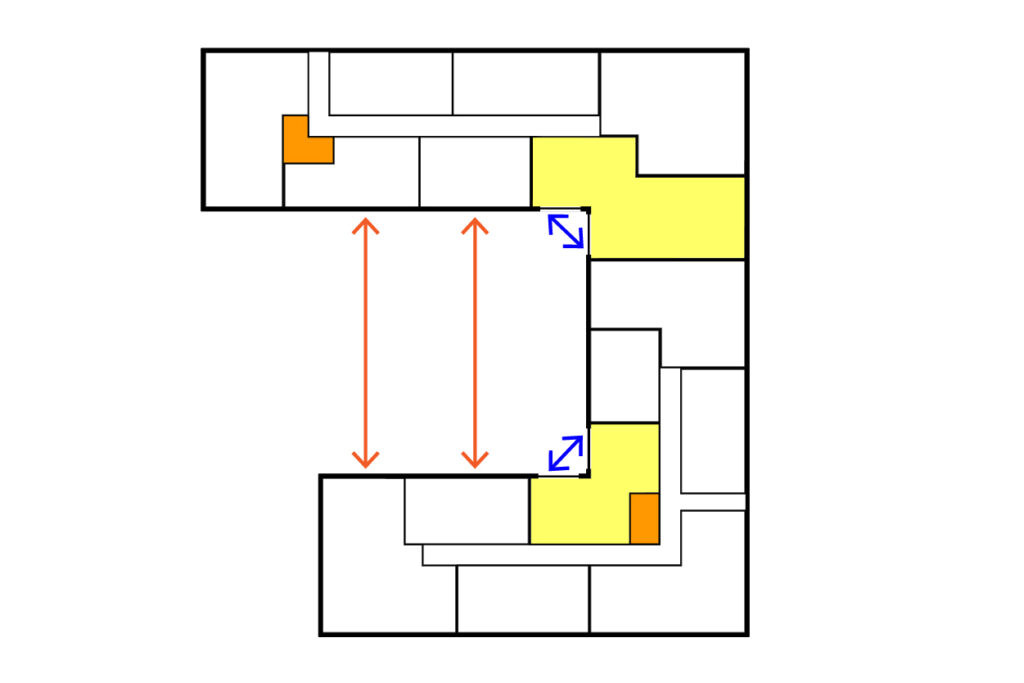
Core and circulation; the core and corridors can be used at corner points for greater separation distance between habitable windows on neighbouring apartment units
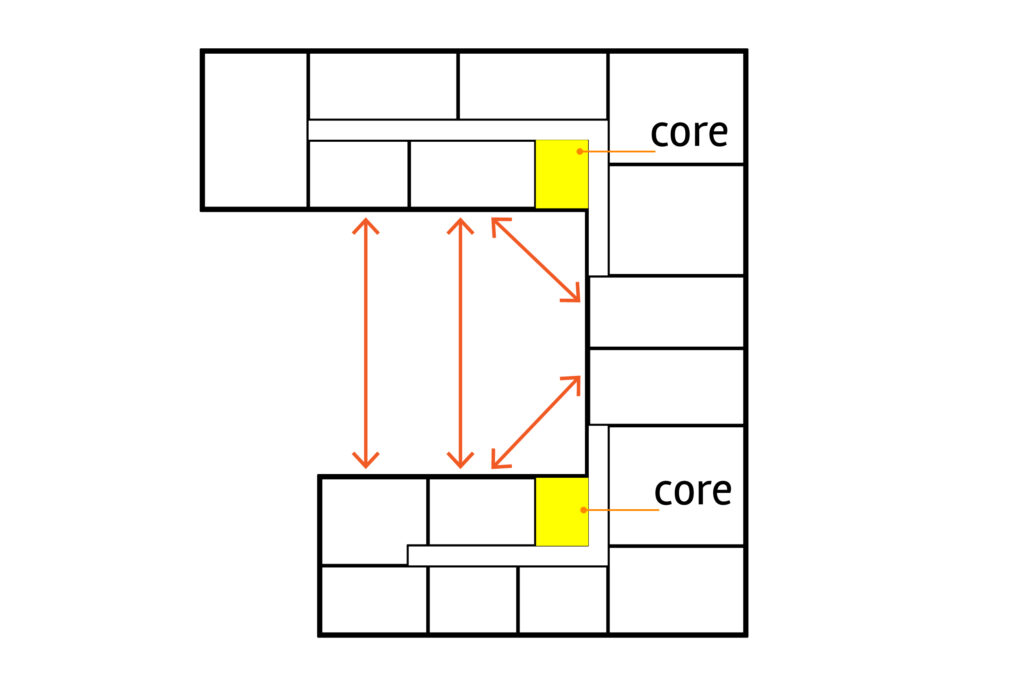
Distance between habitable windows

Overlooking windows of same apartment


Hulme Living Leaf Street Housing by Mecanoo for One Manchester The area around Leaf Street in Hulme, just outside Manchester city centre, has a history
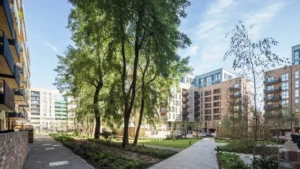
Acton Gardens by Alison Brooks Architects for Countryside Properties This £500m masterplan for the 2600 home, 40-acre regeneration of the South Acton Estate was won by
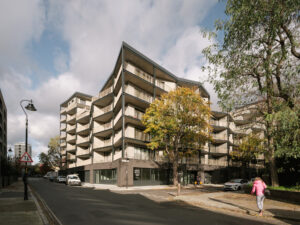
Dockley Apartments by Studio Woodroffe Papa for Matching Green Ltd The redevelopment of the Dockley Road Industrial Estate is part of a wider scheme transforming the railway
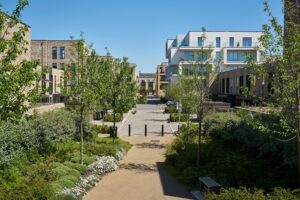
Aura, Great Kneighton by Tate Hindle for Countryside Properties Aura is an example of how good new housing communities can be if a local authority
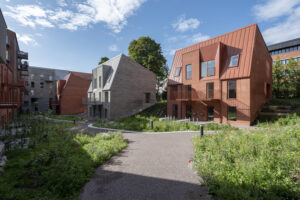
Aarhus residence, Denmark by CEBRA when designing these new apartment buildings in aarhus, denmark, CEBRA architecture began with one of the most important spaces for a community: the
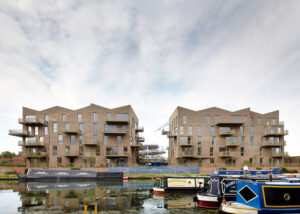
brentwood Lock West, London by Duggan Morris Mixed tenure housing along the waterfront, forming part of a five-year project to breathe new life into the
Trafford Council, Trafford Town Hall, Talbot Road, Stretford, M32 0TH
